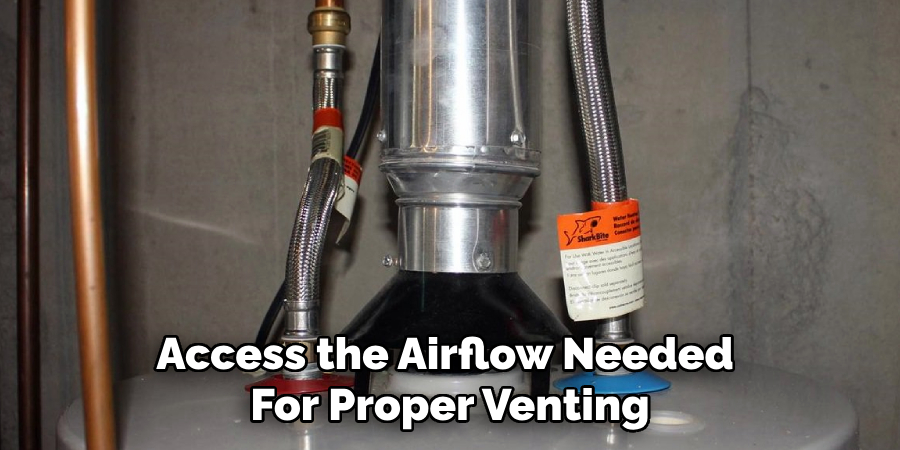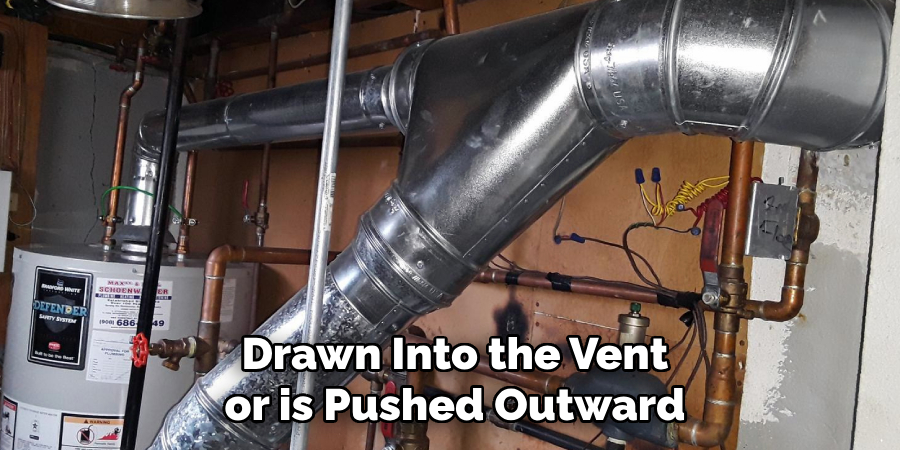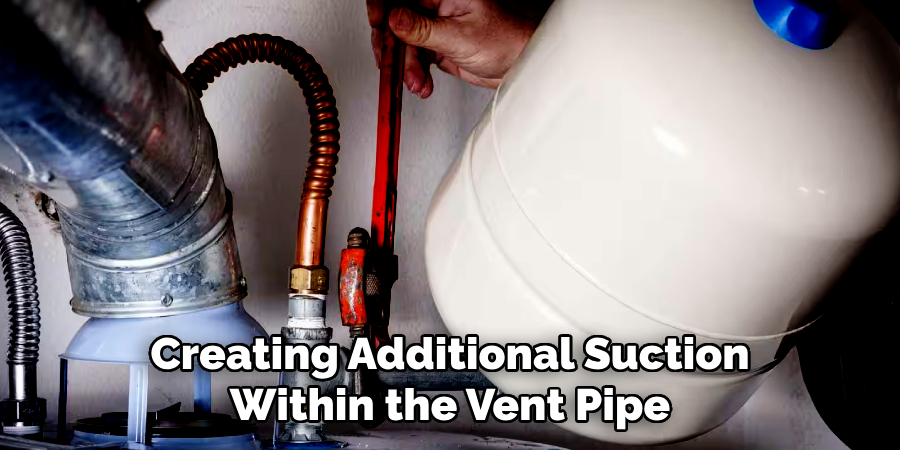Backdrafting occurs when exhaust gases from a gas water heater fail to vent outdoors properly and instead re-enter the home. This issue can arise due to blocked vents, improper installation, or poor airflow in the house. Backdrafting is a serious problem because it allows harmful gases, such as carbon monoxide, to accumulate indoors, putting the health of everyone in the household at risk. Exposure to carbon monoxide can lead to symptoms such as dizziness, nausea, headaches, and, in severe cases, even poisoning.

Common signs of back-drafting include hot, humid air lingering around the water heater, soot or discoloration on surfaces near the vent, and a pilot light that frequently goes out. Addressing backdrafting is vital to ensure a safe and energy-efficient home environment. Knowing how to fix backdrafting water heater problems can prevent long-term damage and safeguard your family’s health and well-being.
Causes of Water Heater Backdrafting
Improper Venting Setup
One of the most common causes of backdrafting is an improper venting setup. This can include issues such as an incorrectly sized vent pipe or a lack of proper slope, which prevents exhaust gases from escaping effectively. Additionally, blocked or disconnected vent pipes can obstruct the safe passage of fumes, leading to backdrafting. Ensuring the venting system is professionally installed and maintained is vital for preventing this issue.
Negative Air Pressure in the Home
Negative air pressure can significantly contribute to backdrafting. Exhaust fans, such as kitchen or bathroom fans, can inadvertently pull air from the water heater’s vent, disrupting the natural flow of exhaust gases. Homes with tight insulation, while energy-efficient, can also restrict the influx of fresh air, which is crucial for proper venting. Balancing airflow within the home is a key step in addressing backdrafting concerns.
Chimney or Flue Problems
Chimney and flue issues, such as debris buildup or bird nests, can block the passage of gas emissions. Over time, flue liners may deteriorate, reducing the draft’s efficiency and trapping harmful gases indoors. Regular inspections and cleaning of these components are crucial for maintaining a safe and functional venting system.
Installation Location Issues
The placement of the water heater plays a significant role in backdrafting risks. Units installed in poorly ventilated or enclosed spaces struggle to access the airflow needed for proper venting. Choosing an appropriate location with adequate ventilation can help minimize the chances of backdrafting.

Checking for Backdrafting
Step 1: Perform a Draft Test
Begin by lighting the water heater and allowing it to run for a few minutes. Once it has been operating, hold a lit match or a smoke stick close to the draft hood at the top of the water heater. Observe the direction of the smoke—if it is drawn into the vent, this indicates proper venting. If the smoke is not pulled into the vent or moves back toward you, this is a sign of backdrafting, and immediate attention is required.
Step 2: Inspect the Vent Pipe
Carefully examine the vent pipe connected to the water heater. Look for any issues such as disconnections, blockages, dents, or improper slopes that could impede the flow of exhaust gases. The vent pipe should slope upward toward the chimney or exhaust outlet. Any signs of damage or improper installation need to be addressed promptly to ensure safe operation and prevent backdrafting.
Step 3: Check for Negative Air Pressure
Negative air pressure inside the home can interfere with proper venting. To test for this, turn on all exhaust fans, such as kitchen or bathroom fans, and then repeat the draft test at the water heater using a match or smoke stick. If smoke is not drawn into the vent or is pushed outward, this indicates negative air pressure is affecting the venting process. Improving home ventilation or balancing airflow should be taken to correct this issue.

How to Fix Backdrafting Water Heater: Fixing Venting System Issues
Step 1: Adjust Vent Pipe Slope and Size
Proper slope and sizing of the vent pipe are critical to ensuring safe and efficient exhaust gas venting. The vent pipe should have an upward slope of ¼-inch per foot toward the chimney or exhaust outlet. This slope promotes the natural flow of gases out of the home. Additionally, confirm that the diameter of the vent pipe matches the manufacturer’s specifications for your water heater. Using an improperly sized pipe can lead to incomplete combustion or backdrafting issues.
Step 2: Clear Blockages in the Vent
Obstructions in the venting system can significantly impair the exhaust flow, leading to potential backdrafting hazards. Inspect the entire flue for blockages such as debris, bird nests, or other obstructions. Pay particular attention to areas where the vent passes through walls or ceilings, as these can accumulate unnoticed debris. Additionally, check the chimney cap for proper installation — it should prevent external debris from entering the flue while still allowing exhaust gases to escape freely. Regularly cleaning and maintaining these components will help ensure a clear venting pathway.
Step 3: Replace or Repair Damaged Venting Components
Damaged venting components can compromise the efficiency and safety of the venting system. Inspect for cracks, rust, or other signs of wear, and replace any damaged sections with high-quality materials. Use double-walled vent pipes to provide added insulation and prevent condensation issues. Seal gaps around vent pipes with heat-resistant materials like HVAC tape or fire-resistant caulk to prevent leaks and improve overall system integrity. Proper maintenance and timely repairs will enhance performance and safety.

Improving Home Ventilation to Prevent Backdrafting
Step 1: Increase Airflow in the Room
One of the simplest ways to improve home ventilation and prevent backdrafting is by increasing airflow in the room where the water heater is located. Start by opening doors or windows near the appliance to allow fresh air to circulate and prevent negative pressure from forming. Consider adding permanent air vents to improve ventilation if the water heater is in an enclosed or confined space. These vents will ensure a steady combustion air supply, reducing the risk of backdrafting and improving overall efficiency.
Step 2: Balance Air Pressure in the Home
Balancing air pressure within your home is crucial to avoid creating conditions that lead to backdrafting. Exhaust fans in kitchens or bathrooms can pull air out of the home, potentially creating negative pressure that draws harmful combustion gases back into living spaces. To prevent this, limit the use of exhaust fans when the water heater is running or install a makeup air vent to introduce fresh air and equalize pressure. This ensures proper airflow and helps maintain a safe indoor environment.
Step 3: Upgrade to a Direct Vent Water Heater
For a long-term solution to backdrafting issues, consider upgrading to a direct vent water heater. These water heaters are designed with sealed combustion systems that draw air directly from the outside and expel exhaust gases safely through a dedicated vent. This design not only eliminates backdrafting risks, especially in tightly sealed homes, but also improves overall energy efficiency. While the initial investment may be higher, a direct vent water heater provides a safer and more reliable solution to ventilation challenges.
Using a Power Vent or Draft Inducer
What Is a Power Vent?
A power vent is a fan-assisted venting system designed to actively force exhaust gases out of your home, ensuring they are safely expelled regardless of natural airflow limitations. Unlike traditional venting methods that rely on gravity and natural draft, a power vent enhances the venting process by using a fan to create a more controlled and reliable flow of exhaust gases, even in complex or restrictive venting scenarios.
Installing a Draft Inducer
A draft inducer fan can be mounted on the flue of your water heater to improve the exhaust airflow. This device works by creating additional suction within the vent pipe, which helps to remove combustion gases more effectively and prevents them from settling back into your living space. Draft inducers are particularly useful for retrofitting older water heaters or addressing venting problems in homes with insufficient chimney venting.

When to Consider This Option
Using a power vent or a draft inducer is an excellent solution if venting through a chimney or other passive methods is not effective. Homes with unusual vent designs, low chimney heights, or restricted airflow are ideal candidates for these systems. While installation requires an additional investment, the increase in safety and efficiency makes it worthwhile.
When to Call a Professional
Sometimes, calling a professional is the safest and most effective course of action. If DIY solutions fail to resolve venting issues, it clearly indicates that more advanced inspection and repairs may be needed. Persistent problems such as backdrafting or inadequate airflow could signify underlying structural issues in the venting system or even the design of your home.
Another critical indicator is frequent carbon monoxide alarm triggers. Carbon monoxide exposure poses serious health risks, and recurring alarms should never be ignored. A professional can identify and mitigate the root cause of the issue while ensuring the safety of your household.
Additionally, consulting a professional is essential if major modifications to the water heater venting system are required. This may include altering vent pipe layouts, installing powered ventilation systems, or adapting to updated building codes. Professionals have the tools and expertise to execute these changes safely and efficiently, reducing the risk of leaks, drafts, or other complications. For peace of mind and a properly functioning system, reach out to an experienced technician whenever venting challenges exceed your capability to handle them as a homeowner.
Conclusion
Addressing venting issues in your water heater system is crucial for maintaining a safe and efficient household. Key solutions include fixing venting problems, improving airflow, and considering installing a power vent system for better performance. Ignoring signs of backdrafting can lead to severe risks, including carbon monoxide exposure. Understanding “how to fix backdrafting water heater” systems is essential, and professional assistance is strongly recommended to ensure proper resolutions. Regular maintenance not only prevents future problems but also increases your water heater’s overall safety and reliability, offering long-term peace of mind.
About the Author
Adrian Green is a passionate woodworking enthusiast who has dedicated his life to the craft of woodworking. From his early days working alongside his father in the family woodworking shop, Adrian has honed his skills and developed a deep love for creating beautiful, functional pieces with his hands. As the voice behind The Woodenify Blog, he shares his knowledge, tips, and inspiration with fellow woodworkers of all skill levels, helping them build confidence in their abilities while learning new techniques.
Professional Focus
- Specializes in DIY woodworking projects, from furniture making to home décor.
- Provides step-by-step guides, tips, and practical tutorials for woodworkers at any skill level.
- Focused on empowering readers with confidence and knowledge through easy-to-follow instructions and hands-on techniques.
- Passionate about building a community where makers can share, learn, and grow together in the world of woodworking.
Education History
University of Craft and Design – Bachelor of Fine Arts (BFA) in Woodworking and Furniture Design
Woodworking Apprenticeships – Gained extensive hands-on experience through various workshops and mentorships with seasoned craftsmen, refining carpentry and furniture-making skills.
Expertise
- DIY woodworking, carpentry, furniture making, and home décor projects.
- Creating clear, accessible tutorials and guides for beginner to advanced woodworkers.
- Helping readers experience the satisfaction and fulfillment of turning raw materials into stunning finished products.
